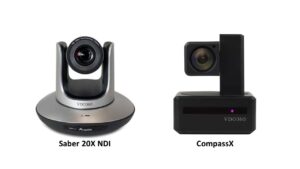In today’s digital age, video conferencing has revolutionized how we connect and collaborate remotely. A reliable USB webcam is essential to ensure clear and engaging virtual meetings. With many options available, finding the ideal webcam for video conferencing can be overwhelming. In this comprehensive guide, we will delve into the world of USB webcams, exploring their impact on video conferencing, discussing essential factors to consider, and addressing frequently asked questions to help you make an informed decision.
Understanding the Importance of USB Webcams for Video Conferencing
Video conferencing has become a vital tool for businesses and individuals alike. But what makes USB webcams crucial to this experience? Let’s explore their significance.
Why are USB webcams essential for video conferencing?
USB webcams enable high-quality video transmission, ensuring clear and crisp visuals during virtual meetings. By capturing facial expressions and non-verbal cues, webcams enhance communication, fostering a sense of connection and collaboration.
Key Factors to Consider When Choosing a USB Webcam for Video Conferencing
Now that we understand the importance of USB webcams in video conferencing, let’s explore the key factors that should influence your purchasing decision:
1. Image Quality: What resolution and frame rate should I look for in a webcam?
Image quality is paramount for effective video conferencing. Look for webcams with HD resolution (1080p or higher) and a frame rate of at least 30 frames per second (fps). Higher resolutions and frame rates provide sharper images and smoother motion, ensuring a professional and engaging experience for all participants.
2. Field of View (FOV): How does the FOV impact video conferencing?
The field of view determines how much of the room or surroundings can be captured in the frame. A wider FOV (around 70-90 degrees) includes more participants or additional elements. However, wider FOVs may introduce distortion or reduce image quality at the edges. Consider the balance between capturing the entire room and maintaining image clarity.
3. Low-Light Performance: Can webcams handle different lighting conditions?
Lighting can significantly impact video quality. Look for webcams with good low-light performance, as they can adjust to dimly lit environments without sacrificing image clarity. This ensures that you are always visible, regardless of the lighting conditions.
4. Autofocus and Zoom Capabilities: Are these features important?
Webcams with autofocus and zoom capabilities provide flexibility during video conferences. Autofocus ensures you remain sharp and clear even when moving or adjusting your position.
Zoom capabilities enable you to focus on specific details or present documents, enhancing visual communication.
5. Audio Quality: Does the webcam’s built-in microphone suffice?
While webcams often come with built-in microphones, the audio quality may vary. Consider the size and layout of your meeting space and assess whether the built-in microphone captures audio clearly and eliminates background noise. External microphones can also be used for enhanced audio performance.
Frequently Asked Questions About USB Webcams for Video Conferencing
Let’s address common questions when choosing a USB webcam for video conferencing:
1. Can I use my laptop’s built-in webcam for video conferencing?
While using your laptop’s built-in webcam for video conferencing is possible, it’s worth considering the advantages of upgrading to a dedicated USB webcam, such as those offered by VDO360. VDO360 webcams are specifically designed for professional video conferencing, offering higher image quality, superior audio, and advanced features that enhance your overall conferencing experience.
2. Do all USB webcams work with any video conferencing software?
Most USB webcams are designed to be compatible with popular video conferencing software such as Zoom, Microsoft Teams, and Google Meet. However, checking the webcam’s specifications and compatibility with your preferred software is always recommended.
VDO360 webcams are known for their seamless compatibility and work seamlessly with a wide range of video conferencing applications, giving you peace of mind and avoiding potential compatibility issues.
3. Are there any privacy concerns with USB webcams?
Webcam privacy is an important consideration. Regarding privacy concerns, VDO360 webcams prioritize your security. With features like built-in privacy shutters and LED indicators, you have complete control over your webcam’s usage. You can easily protect your privacy by covering the lens when not in use, and the LED indicator provides a clear visual cue to let you know when the camera is active, leaving no room for unauthorized access.
4. Can I use multiple webcams for video conferencing?
VDO360 webcams are designed to support multi-camera setups for video conferencing. Particularly useful in scenarios where you want to capture different angles or have an ample meeting space. With VDO360’s flexible software and hardware options, you can easily incorporate multiple webcams into your video conferencing setup and switch between them seamlessly, providing a more immersive and dynamic conferencing experience.
Conclusion
A high-quality USB webcam is crucial to a successful video conferencing setup. By considering factors such as image quality, FOV, low-light performance, autofocus, and audio quality, you can elevate your virtual meetings to a new level of professionalism and engagement. Remember to strike a balance between your specific requirements and budget. With the right USB webcam, you can communicate effectively, collaborate seamlessly, and leave a lasting impression in the virtual realm.




